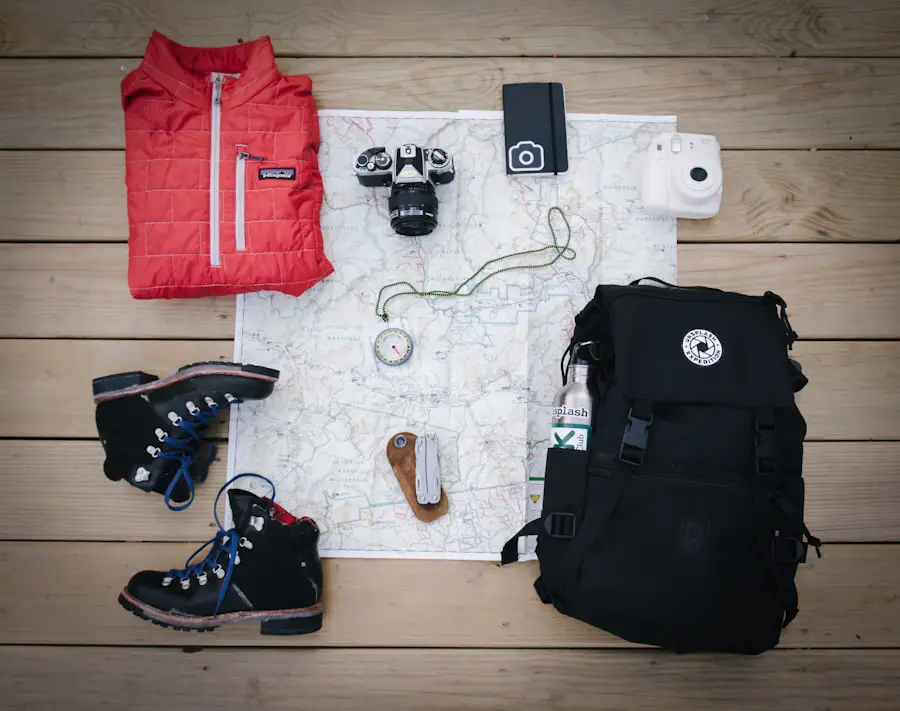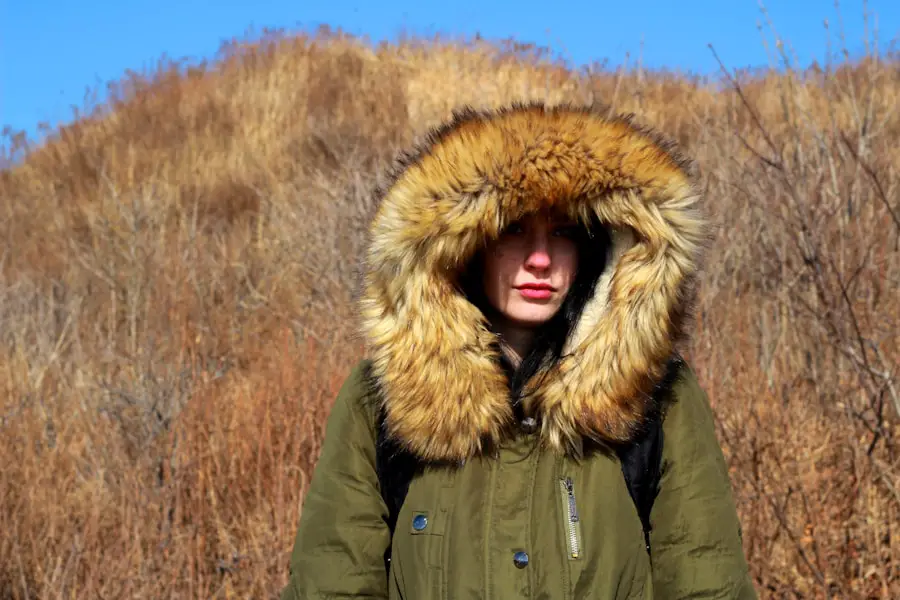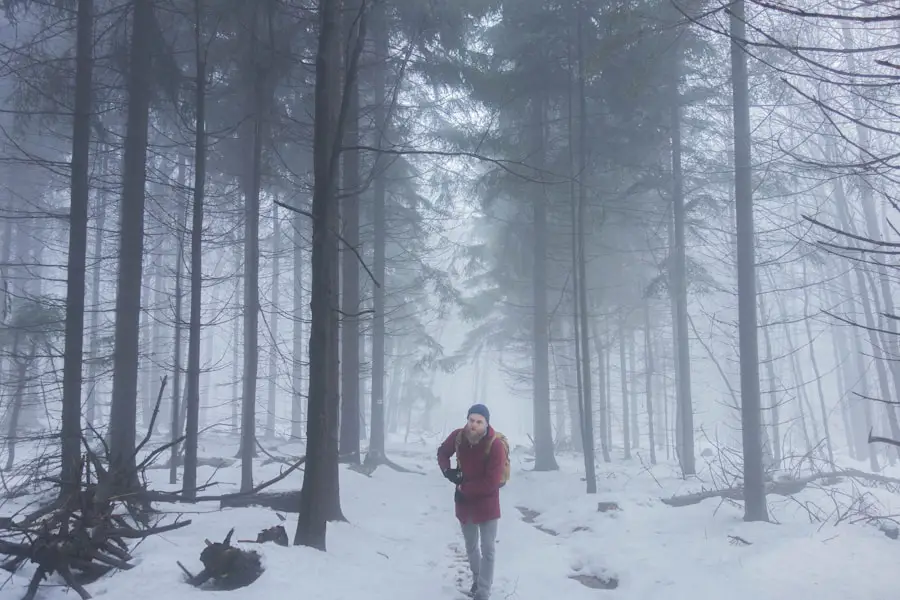When venturing out into 30-degree weather, the principle of layering becomes paramount. The goal of layering is to create a system that traps heat while allowing moisture to escape, ensuring comfort and warmth. The base layer, which is the first layer of clothing worn next to the skin, should be made from moisture-wicking materials such as merino wool or synthetic fabrics.
These materials help to draw sweat away from the body, preventing the chill that can occur when moisture is trapped against the skin. A fitted long-sleeve shirt or thermal top serves as an excellent base layer, providing both insulation and breathability. The middle layer is where insulation comes into play.
Fleece jackets or down vests are popular choices for this layer, as they provide warmth without adding excessive bulk. The middle layer should be easy to remove or adjust, allowing for temperature regulation as activity levels change. For instance, if you are hiking and begin to feel warm, you can easily unzip your fleece or remove it altogether.
Finally, the outer layer, often referred to as the shell, should be windproof and waterproof to protect against the elements. A well-fitted jacket with adjustable cuffs and a hem can help seal in warmth while keeping out cold air and moisture. This three-layer system not only keeps you warm but also allows for flexibility and comfort during outdoor activities.
Key Takeaways
- Layering clothing is essential for staying warm in 30-degree weather
- Insulated waterproof boots are a must-have for cold and wet conditions
- Thermal gloves and mittens are crucial for protecting hands from the cold
- Wool socks provide warmth and moisture-wicking properties
- An insulated water bottle is necessary to prevent freezing in cold weather
Insulated Waterproof Boots for Cold and Wet Conditions
Waterproofing: A Key Feature
Look for boots that feature a waterproof membrane, such as Gore-Tex, which allows moisture to escape while preventing water from entering. This is particularly important when walking through slushy snow or wet terrain, where soggy socks can quickly lead to discomfort and even frostbite.
Insulation: Trapping Heat Without Adding Weight
Insulation is another critical factor when selecting boots for cold weather. Many insulated boots use materials like Thinsulate or synthetic insulation that trap heat without adding excessive weight.
Traction and Fit: Ensuring Comfort and Safety
A good pair of insulated boots should also have a sturdy sole with a deep tread pattern to provide traction on slippery surfaces. For example, brands like Sorel and Columbia offer models specifically designed for winter conditions, combining waterproofing with insulation and grip. When choosing boots, ensure they fit well with enough room for thick socks, as tight footwear can restrict circulation and lead to cold feet.
Thermal Gloves and Mittens to Protect Hands from the Cold

The hands are often one of the first body parts to feel the effects of cold weather, making thermal gloves and mittens an essential part of any winter outfit. When selecting gloves or mittens, consider materials that provide both warmth and dexterity. Gloves made from a combination of wool and synthetic fibers can offer a good balance between insulation and flexibility, allowing for tasks like adjusting gear or using a smartphone without removing them.
Mittens, on the other hand, provide superior warmth because they allow fingers to share heat. Many modern mittens come with removable liners that can be washed separately or replaced if they become worn out. Look for options with features such as adjustable wrist straps or elastic cuffs to keep snow out and warmth in.
Brands like North Face and Outdoor Research offer a variety of styles that cater to different activities, from skiing to winter hiking. Additionally, some gloves come equipped with touchscreen technology, allowing you to use your devices without exposing your hands to the cold.
Wool Socks for Warmth and Moisture Wicking
| Brand | Material | Thickness | Moisture Wicking | Warmth |
|---|---|---|---|---|
| Smartwool | Merino Wool | Medium | High | High |
| Darn Tough | Merino Wool | Medium | High | High |
| Icebreaker | Merino Wool | Medium | High | High |
Wool socks are a staple in cold-weather gear due to their natural insulating properties and moisture-wicking capabilities. Unlike cotton, which retains moisture and can lead to cold feet, wool fibers wick sweat away from the skin while still providing warmth even when damp. Merino wool is particularly favored for its softness and comfort; it is less itchy than traditional wool and offers excellent thermal regulation.
When choosing wool socks for winter activities, consider thickness based on your intended use. Thicker socks provide more cushioning and warmth, making them ideal for activities like snowshoeing or winter hiking. Conversely, lighter-weight wool socks may be more suitable for activities where you need more dexterity, such as skiing or ice climbing.
Brands like Smartwool and Darn Tough offer a range of options tailored for different activities and temperatures, ensuring that your feet stay warm and dry throughout your outdoor adventures.
Insulated Water Bottle to Prevent Freezing
Staying hydrated in cold weather is just as important as in warmer months; however, water can freeze quickly in frigid temperatures. An insulated water bottle is an essential item for anyone spending time outdoors in winter conditions. These bottles are designed with double-wall vacuum insulation that keeps liquids hot or cold for extended periods.
This means that not only will your water remain unfrozen, but you can also enjoy warm beverages like tea or hot chocolate during your outdoor excursions. When selecting an insulated water bottle, consider features such as a wide mouth for easy filling and cleaning, as well as a durable exterior that can withstand drops or rough handling. Stainless steel bottles are particularly popular due to their durability and resistance to rust.
Brands like Hydro Flask and Klean Kanteen offer a variety of sizes and colors, making it easy to find one that suits your needs. Additionally, some insulated bottles come with built-in straws or spouts for convenient sipping while on the move.
Windproof and Waterproof Jacket for Protection from the Elements

A windproof and waterproof jacket is a critical component of any winter wardrobe, especially when facing harsh weather conditions. The right jacket acts as a barrier against wind chill and precipitation, helping to maintain body heat during outdoor activities. Look for jackets made from high-quality materials such as Gore-Tex or similar fabrics that provide both breathability and waterproofing.
These materials allow sweat to escape while keeping rain and snow at bay. Features such as adjustable hoods, cuffs, and hems can enhance the jacket’s effectiveness by providing a snug fit that prevents cold air from entering. Additionally, consider jackets with ventilation zippers under the arms or on the back; these allow for increased airflow during high-intensity activities like hiking or skiing.
Brands like Patagonia and Arc’teryx are known for their high-performance outerwear that combines functionality with style, ensuring you stay protected without sacrificing comfort.
Thermal Hat or Beanie to Keep Head and Ears Warm
A significant amount of body heat is lost through the head, making a thermal hat or beanie an essential accessory in cold weather. A well-fitted hat not only keeps your head warm but also protects your ears from biting winds. Look for hats made from materials like fleece or wool that provide insulation while remaining breathable.
Merino wool beanies are particularly popular due to their softness and ability to wick moisture away from the skin. Consider styles that cover the ears completely or have ear flaps for added protection against extreme cold. Some hats come with built-in features such as reflective strips for visibility during low-light conditions or even integrated headphones for listening to music while on the go.
Brands like Columbia and North Face offer a variety of options designed specifically for winter sports enthusiasts, ensuring that you can enjoy your outdoor activities without compromising on warmth.
Trekking Poles for Stability and Support on Icy or Snowy Terrain
Trekking poles are invaluable tools when navigating icy or snowy terrain, providing stability and support during challenging conditions. They help distribute weight evenly across the body while reducing strain on the knees and joints during descents or uneven surfaces. When selecting trekking poles for winter use, look for models equipped with wider baskets that prevent sinking into soft snow.
Adjustable poles are particularly beneficial as they allow users to customize the height based on their needs or terrain changes. Many trekking poles also feature rubber tips designed specifically for icy surfaces, enhancing grip and reducing the risk of slipping. Brands like Black Diamond and Leki offer high-quality trekking poles that are lightweight yet durable enough to withstand harsh winter conditions.
Using trekking poles not only enhances safety but also improves overall balance and confidence when traversing challenging landscapes in cold weather.
If you’re planning a hiking trip in 30-degree weather, you may also want to consider reading an article about traveling to Niagara Falls with passport-free access. This article discusses the convenience of visiting this iconic destination without the need for a passport, making it easier for travelers to explore the natural beauty of the falls. Check out the article here for more information on this travel option.
FAQs
What should I wear for hiking in 30-degree weather?
In 30-degree weather, it’s important to wear layers to stay warm and dry. Start with a moisture-wicking base layer, add an insulating layer, and finish with a waterproof and windproof outer layer.
What type of base layer is best for hiking in 30-degree weather?
A moisture-wicking base layer made of synthetic materials or merino wool is best for hiking in 30-degree weather. This will help keep sweat away from your skin and keep you dry and warm.
What kind of insulating layer should I wear for hiking in 30-degree weather?
For an insulating layer in 30-degree weather, consider wearing a fleece jacket or a down jacket to provide warmth without adding too much bulk.
What type of outer layer is suitable for hiking in 30-degree weather?
In 30-degree weather, it’s important to wear a waterproof and windproof outer layer to protect yourself from the elements. Look for a jacket that is breathable to prevent overheating.
What kind of pants are recommended for hiking in 30-degree weather?
For hiking in 30-degree weather, consider wearing insulated and waterproof pants to keep your legs warm and dry. Look for pants with ventilation options to prevent overheating.
What type of footwear is best for hiking in 30-degree weather?
In 30-degree weather, it’s important to wear waterproof and insulated hiking boots to keep your feet warm and dry. Consider wearing wool socks for added warmth.
What accessories should I bring for hiking in 30-degree weather?
For hiking in 30-degree weather, be sure to bring a warm hat, gloves, and a scarf or neck gaiter to protect your extremities from the cold. Sunglasses and sunscreen are also important to protect against sun glare and UV rays.
